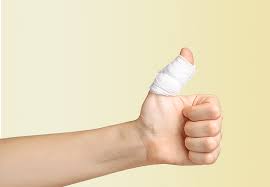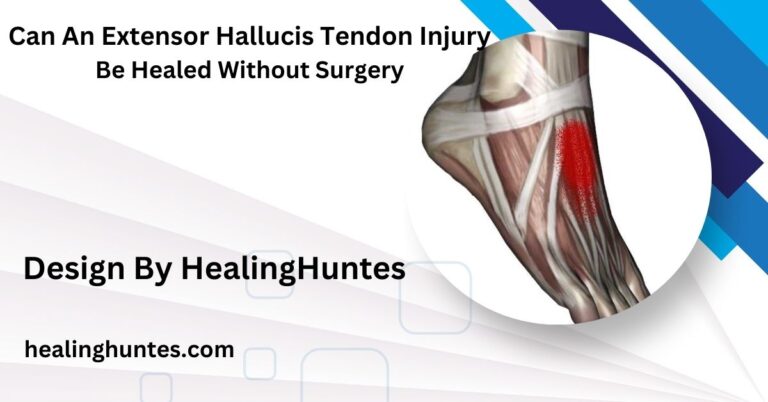How Long Does A Jammed Finger Take To Heal – Jammed Finger Recovery!
A jammed finger typically heals in 1-2 weeks for mild injuries, 3-4 weeks for moderate, and 4-6 weeks or more for severe cases with proper care. Severe injuries may need medical attention.
In this article, we’ll explore the factors that affect recovery time, how to treat a jammed finger, and when you might need medical attention.
What is a Jammed Finger?

A jammed finger occurs when a force or impact causes the finger to bend or compress unnaturally, often affecting the joints, ligaments, tendons, or bones. It is most commonly seen when a ball strikes the finger, such as in sports like basketball or volleyball, or when the finger is caught in a door or hit with a heavy object.
Types of Jammed Finger Injuries:
The severity of a jammed finger can vary significantly, and the healing time will depend on the type and extent of the injury. Here are the most common types of jammed finger injuries:
- Sprain: A sprain occurs when the ligaments around the joint are overstretched or torn. This is the most common form of a jammed finger injury, causing swelling, bruising, and pain around the joint.
- Fracture: A fractured or broken finger is when one or more of the bones in the finger are cracked or broken. This can result from a direct blow or forceful impact.
- Dislocation: A dislocation happens when the bones of the finger are forced out of their normal position in the joint, leading to severe pain, swelling, and deformity.
- Tendon Injuries: The tendons in the finger help facilitate movement. If a jammed finger injures the tendons, it may affect the ability to bend or straighten the finger properly.
How Long Does a Jammed Finger Take to Heal?
The healing time for a jammed finger varies depending on the severity of the injury. For mild cases, recovery can be quick, but for more severe injuries, the healing process may take several weeks. Below is a breakdown of recovery times based on the severity of the injury:
Also Read: How Can I Make A Wound Heal Faster – Proven Tips and Tricks!
Mild Jammed Finger: (1-2 Weeks)
A mild jammed finger usually involves minor ligament strain or slight swelling, which typically heals within 1 to 2 weeks. This type of injury doesn’t involve fractures or dislocations, and the swelling and bruising may be mild.
Treatment Tips for Mild Injuries:
- Rest the finger to avoid aggravating the injury.
- Apply ice for 15-20 minutes every few hours to reduce swelling.
- Elevate the finger to minimize swelling.
- You may be able to return to light activities once the pain and swelling subside.
Moderate Jammed Finger: (3-4 Weeks)

Moderate jammed fingers can involve more swelling, pain, and some difficulty moving the finger. This can happen when the ligaments are more stretched or torn, and the swelling is more pronounced. A moderate injury may take about 3 to 4 weeks to heal.
Treatment Tips for Moderate Injuries:
- Buddy taping the injured finger to an adjacent finger is a common treatment to stabilize the joint and prevent further strain.
- You may also need to wear a splint or brace to keep the finger immobilized and promote healing.
- Engage in physical therapy or gentle stretching exercises once the swelling decreases to restore flexibility and strength to the finger.
- Use pain relievers to manage any discomfort during the healing process.
Severe Jammed Finger: (4-6 Weeks or More)
Severe cases of a jammed finger may involve fractures, dislocations, or significant ligament tears. These injuries take a longer time to heal, often requiring 4 to 6 weeks or longer. In rare cases, surgery may be necessary if the injury is severe enough.
Also Read: Will A Torn Meniscus Heal On Its Own – What to Expect Without Surgery!
Treatment Tips for Severe Injuries:
- If the injury involves a fracture or dislocation, you may need to wear a cast or splint to immobilize the finger.
- In cases of dislocation or bone fracture, medical intervention may include resetting the bones or performing surgery.
- Pain management, including prescription medications, may be necessary for severe cases.
- A more intensive rehabilitation program may be required to restore full movement and strength after healing.
Factors That Affect Healing Time:

Several factors can influence how long it takes for your jammed finger to heal, including:
- Severity of the Injury: As mentioned, the severity of the injury is one of the most important factors in determining recovery time. Minor sprains and soft tissue injuries heal quickly, while fractures and dislocations take longer.
- Age and Health: Younger, healthier individuals tend to heal faster than older individuals or those with underlying health conditions such as arthritis or diabetes.
- Treatment: The type of treatment you receive, and how soon you start caring for the injury, can impact recovery time. Early intervention with rest, ice, and proper care helps speed up healing.
- Finger Use: The more you use the injured finger, the longer it may take to heal. If you continue to engage in activities that strain the injured finger, it may worsen the damage and extend healing time.
How to Treat a Jammed Finger at Home?
- Rest: Give the finger time to heal by resting it. Avoid using the injured finger in any strenuous activity, and refrain from sports until the injury has healed.
- Ice: Applying ice to the affected area can help reduce swelling and pain. Do this for 15-20 minutes every few hours during the first 48 hours after the injury.
- Elevation: Elevate your hand and finger above heart level to reduce swelling.
- Buddy Taping: Buddy taping involves taping the injured finger to an adjacent, healthy finger. This helps keep the joint stable and prevents further strain on the injured finger.
- Splinting: If necessary, you may need to use a splint to immobilize the finger and promote healing.
- Pain Relief: Over-the-counter pain relievers such as ibuprofen or acetaminophen can help reduce pain and swelling.
- Gentle Stretching: After the swelling goes down, and you no longer experience severe pain, you can begin gently stretching and moving the finger to restore mobility. Be cautious and consult a doctor or physical therapist before beginning any exercises.
When to See a Doctor?
In most cases, jammed fingers can be treated at home, but there are situations where you should seek medical attention:
- If the pain is severe and does not improve with rest or pain relievers
- If the finger looks deformed or misaligned (indicating a possible fracture or dislocation)
- If there’s persistent numbness, tingling, or inability to move the finger
- If the swelling does not go down after a few days of at-home care
- If there are signs of infection (redness, warmth, pus) in the case of an open wound
FAQ’s
1. How can I tell if my finger is jammed or broken?
A broken finger may appear deformed, and there may be intense pain, swelling, or inability to move it.
2. Can I continue playing sports with a jammed finger?
It’s best to rest the finger and avoid activities that may aggravate the injury.
3. How long does it take for a jammed finger to heal?
Mild cases heal in 1-2 weeks, moderate in 3-4 weeks, and severe injuries may take 4-6 weeks or longer.
4. Should I see a doctor for a jammed finger?
See a doctor if the finger is deformed, if you can’t move it, or if there’s persistent pain or swelling.
5. What is the best way to treat a jammed finger at home?
Rest, ice, elevation, buddy taping, and pain relief can help manage the injury effectively at home.
Conclusion
A jammed finger typically heals in a few days to weeks, depending on the severity. Mild injuries recover in 1-2 weeks, moderate cases in 3-4 weeks, and severe injuries may take 4-6 weeks or longer. Proper care, including rest, ice, and treatment, speeds recovery. For severe cases, consult a healthcare professional for effective treatment.






